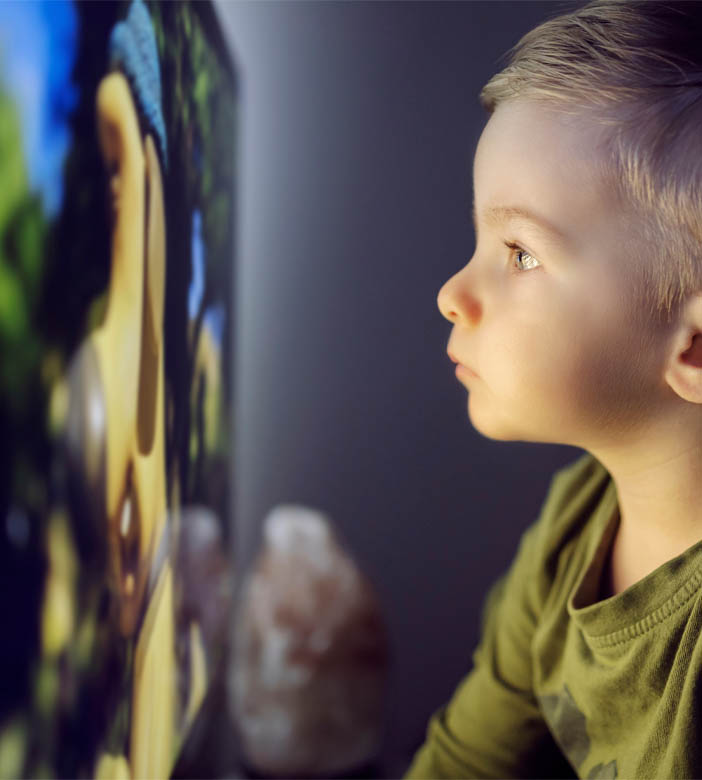Having your child’s myopia diagnosed early not only helps their vision now, but it can help slow the progression of myopia, preserving their vision and their eye health for the future.
Having your child’s myopia diagnosed early not only helps their vision now, but it can help slow the progression of myopia, preserving their vision and their eye health for the future.
THINKING OF THE FUTURE
What is myopia?
1 in 3 people in the UK are affected by myopia¹, though this is expected to increase significantly worldwide due to changes in trends and lifestyle. For example, these days children engage in many more close-work activities such as using mobile phones and tablets. Spending less time outdoors is also a factor to consider.

In the UK, the prevalence of myopia in children aged between 10-16 years has more than doubled over the last 50 years²
By 2050 it is estimated that 50% of the world's population will be short-sighted, a fifth of whom will be at high risk of sight-threatening conditions as a result.³
By 2050 it is estimated that 50% of the world's population will be short-sighted, a fifth of whom will be at high risk of sight-threatening conditions as a result.
Signs of myopia
Tell-tale signs include:
- Difficulty reading words from afar, such as reading the board at school
- Frequently rubbing the eyes
- Sitting too close to the television or computer, or holding mobile phones or tablets close to the face
- Needing to squint or partially close the eyes to see more clearly
- Frequent headaches



Myopia Care
See for yourself
Myopia management is becoming increasingly popular for children and teenagers. As an independent opticians, Barracloughs have access to the latest contact lenses, spectacle lenses and products on the market.
Our optometrists and dispensing opticians have complete freedom to discuss the available options with you and your child, understand their individual needs and find the best solution for them.
¹ NHS.uk
² McCullough SJ, O’Donoghue L, Saunders KJ (2016) Six Year Refractive Change among White Children and Young Adults: Evidence for Significant Increase in Myopia among White UK Children. PLoS ONE 11(1)
³ Holden BA, Fricke TR, Wilson DA, Jong M, Naidoo KS, Sankaridurg P, Wong TY, Naduvilath TJ, Resnikoff S, Global Prevalence of Myopia and High Myopia and Temporal Trends from 2000 through 2050, Ophthalmology, May 2016,123(5), 1036–1042.
⁴ Mew-May Wu M, Edwards MH. The Effect of Having Myopic Parents: An Analysis of Myopia in Three Generations. Optometry and Vision Science. 1999 Jun 1;76(6):387–92










